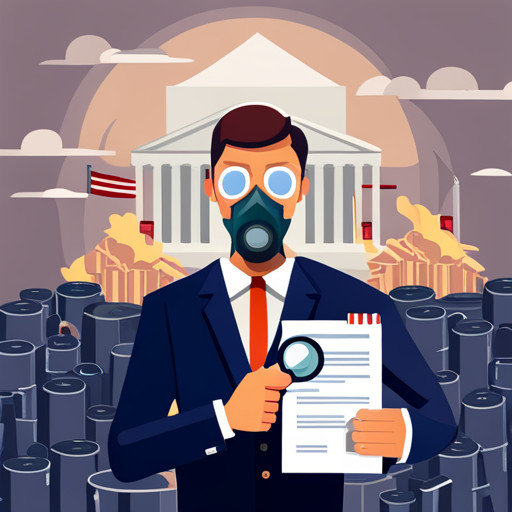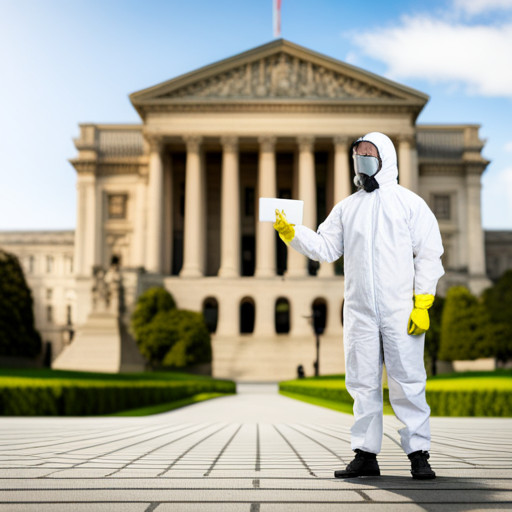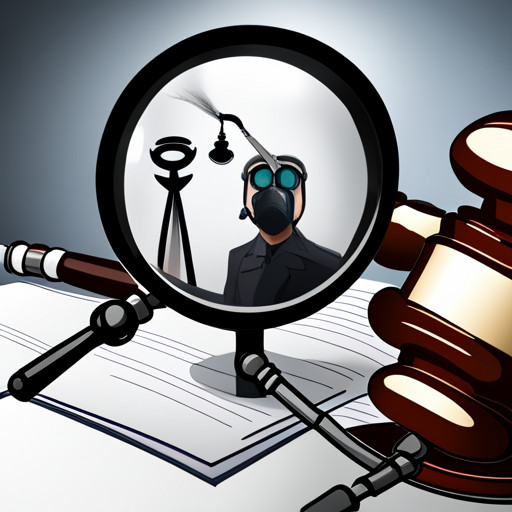Unmasking Legal Jargon: Understanding Your Rights as a Toxic Exposure Victim
Navigating the labyrinth of toxic tort law can prove to be a formidable task. Discerning potential toxic exposure and comprehending the legal rights associated with such exposure are also challenging. This article aims to demystify these challenges by providing a comprehensive guide to understanding and navigating the complexities of toxic exposure cases. By equipping potential victims with the knowledge they need, this guide will help them protect their legal rights.

Key Takeaways
- Toxic exposure can occur in occupational settings and can have serious health consequences.
- Early detection and proper use of personal protective equipment are crucial in preventing toxic exposure.
- Toxic Tort Law provides a legal pathway for victims of toxic exposure to claim compensation.
- Victims of toxic exposure have the right to seek legal representation, compensation, and a fair trial to protect their rights and receive recompense.
Understanding Toxic Exposure: What It Means

Toxic exposure refers to the harmful interaction between a toxic substance and the human body, often leading to a range of health complications. Substances such as lead, asbestos, and benzene, among others, pose serious health risks when humans are exposed to them. These risks can be amplified in occupational settings, where prolonged exposure is often unavoidable.
Exposure symptoms can vary widely depending on the substance, the length of exposure, and the individual's overall health. Symptoms often mimic those of common illnesses, making diagnosis challenging. For instance, lead exposure can result in nausea, abdominal pain, and fatigue, while asbestos exposure can cause chest pain and shortness of breath. Early detection is imperative to prevent serious health consequences, including chronic diseases and potential fatalities.
Prevention measures are crucial to mitigate the risk of toxic exposure. These include proper use of personal protective equipment, adherence to safety protocols, and regular monitoring of exposure levels in the environment. Moreover, stringent regulations should be enforced to govern the handling and disposal of toxic substances. Education and awareness are also paramount, ensuring individuals understand the risks and take appropriate precautions to protect their health.
The Basics of Toxic Tort Law

Toxic Tort Law is a critical component within the legal framework. It is a specialized area of law that deals with injuries caused by hazardous substances. Understanding this area of law is crucial for the ensuing discussion.
The discourse aims to elucidate the intricacies of Toxic Tort Law. It will lay bare the complex layers of this legal area, providing a comprehensive understanding.
Simultaneously, the discussion will venture into an important facet of this legal domain. It will focus on elucidating the rights of victims in cases of toxic exposure. This will provide necessary insights and foster an informed perspective.
Defining Toxic Tort Law
Understanding the principles of Toxic Tort Law is essential for comprehending the legal avenues available for those exposed to hazardous substances. This legal concept, born from the evolution of tort law, has a rich history and is instrumental in protecting victims of toxic exposure.
The history of toxic torts:
- Emerged in the late 20th century, coinciding with the rise of industrial hazards.
- Significant cases such as asbestos exposure led to the recognition of these special claims in law.
Tort law evolution:
- Origin can be traced back to English Common Law.
- Evolved to include complex damages and a broader range of liabilities.
Defining Toxic Tort Law:
- A specific branch of tort law dealing with injuries caused by exposure to hazardous substances.
- Provides a legal pathway for victims to claim compensation.
Victim’s Rights Explanation
In the realm of Toxic Tort Law, comprehending the rights of those negatively impacted by hazardous substances is paramount. These rights include, but are not limited to, the right to legal representation, the right to seek and receive compensation, and the right to a fair trial.
Compensation possibilities extend beyond physical harm and can include emotional trauma, loss of earnings, and other damages directly attributable to the toxic exposure. It is also crucial to understand that the burden of proof lies with the victim. Hence, substantial and credible evidence must be presented to establish causality between the toxic exposure and the harm suffered.
Ultimately, the rights of victims are an essential aspect of toxic tort law, designed to protect and provide recompense to those adversely affected.
How to Identify Potential Toxic Exposure

Identification of potential toxic exposure entails comprehensive knowledge of both immediate and long-term health effects associated with specific toxic substances. The complexity of this process is compounded by the fact that exposure symptoms can vary significantly, depending on the nature and concentration of the toxic substance, as well as the duration and frequency of exposure.
The identification process can be broadly categorized into three domains:
* Recognition of Exposure Symptoms:
- Immediate symptoms might include headaches, nausea, skin irritation, and eye or throat discomfort.
- Long-term effects might manifest as chronic illnesses, such as cancer, neurological disorders, or reproductive health issues.
* Contextual Analysis:
- This involves understanding the environment where the exposure might have occurred. It could be a workplace with hazardous substances, residential areas near industrial sites, or regions with contaminated water or air.
* Prevention Measures:
- Implementing safety protocols for handling toxic substances, proper disposal of hazardous waste, and regular health check-ups for early detection of exposure symptoms.
Through detailed and fact-based analysis, it becomes evident that the identification of potential toxic exposure is a systematic process that requires vigilance and proactive involvement. Proactive measures in recognizing symptoms, understanding the context, and initiating preventive actions are key to mitigating the harms of toxic exposure.
Awareness and understanding of these elements not only aids in the identification of potential toxic exposure but also enhances the capacity to prevent it.
Key Legal Terminologies in Toxic Exposure Cases

Having explored the identification of potential toxic exposure, attention now turns to the crucial task of understanding key legal terminologies in toxic exposure cases. This comprehension is vital in not only navigating the intricate complexities of the law but also ensuring that victims can effectively advocate for their rights and secure due compensation.
In the realm of toxic exposure cases, two terms of paramount importance are 'Compensation Calculation' and 'Claim Process'. Under the purview of toxic exposure law, Compensation Calculation refers to the process of determining the monetary amount a victim should receive to cover physical and emotional damages, lost wages, and other associated costs linked to the toxic exposure incident. The accuracy of this calculation is crucial, as it directly impacts the financial relief a victim can secure.
On the other hand, the Claim Process refers to the procedural steps a victim must undertake to formally request compensation for damages suffered due to toxic exposure. These steps typically encompass filing a claim, presenting evidence of exposure and damages, negotiating with the responsible parties or their insurance providers, and pursuing the claim in court if a fair settlement cannot be achieved.
Understanding these legal terminologies is indispensable for victims of toxic exposure. It empowers them to effectively navigate the legal landscape and increases their likelihood of securing rightful compensation. As such, it is imperative to seek legal guidance and become conversant with these terminologies to ensure that justice is not only sought but also served.
Your Legal Rights as a Toxic Exposure Victim

Knowledge of the entitlements associated with being subjected to harmful substances is crucial, as it provides the foundation for victims to pursue justice and obtain due recompense. A comprehensive understanding of legal rights in toxic exposure cases is necessary. It is paramount to note that these rights may vary based on the jurisdiction, however, some fundamental principles remain the same.
- Rights of victims include:
- Right to sue: This is a basic right that allows victims to initiate legal proceedings against the party responsible for their exposure to harmful substances.
- Right to compensation: Compensation eligibility is determined based on the extent of the harm and negligence of the accused party.
- Right to representation: Victims are entitled to legal representation to assist in proving negligence and to ensure their rights are upheld.
Proving negligence is a key element in toxic exposure cases. To establish negligence, the victim must demonstrate that:
- The accused had a duty of care towards the victim.
- This duty was breached, leading to exposure to harmful substances.
- The victim suffered harm as a direct result of this breach.
Steps to Take After Suspected Toxic Exposure

Immediately following a suspected encounter with harmful substances, certain measures should be undertaken to safeguard one's health and preserve potential legal claims. The first step after exposure should be immediate removal from the area of contamination, a crucial aspect of exposure prevention. This action mitigates further harm and potentially life-threatening complications.
Next, seeking immediate medical consultation is paramount. Medical professionals can carry out necessary tests, provide treatment for symptoms, and offer expert advice on managing potential long-term effects. Documentation of the medical consultation, including any treatment received, provides essential evidence in any subsequent legal claim.
Simultaneously, the incident should be reported to the relevant authorities. This step not only facilitates an investigation into the exposure but also serves as an official record of the incident. Keeping a personal record of the incident, including dates, locations, substances involved, and any potential witnesses, could also prove pivotal in a legal claim.
Additionally, engaging a legal practitioner experienced in toxic exposure cases is advisable. Such an expert can help navigate the complex legal terrain, ensuring that all necessary steps are taken to preserve potential claims. They can also guide on deadlines for filing claims, as these vary depending on the jurisdiction and the nature of the exposure.
Lastly, it is recommended to engage in regular follow-up medical consultations. Long-term effects of toxic exposure may not manifest immediately and regular check-ups can ensure early detection and treatment of any related health issues.
How to Find a Qualified Toxic Tort Attorney

Navigating the complex landscape of toxic tort litigation necessitates the engagement of a proficient attorney with a demonstrated expertise in this intricate field. A rigorous assessment of an attorney's track record is critical in order to ensure a high level of competence and experience in handling similar cases.
The forthcoming discussion aims to elucidate the process of identifying such expertise in attorneys and evaluating their track record, both of which are pivotal steps in securing the right representation for victims of toxic exposure.
Identifying Expertise in Attorneys
Identifying expertise in attorneys significantly contributes to the successful resolution of toxic exposure cases. It is imperative to understand the structure of attorney fees and legal ethics to ensure the selection of a competent attorney.
- Attorney Fees
- Typically, toxic tort attorneys operate on a contingency basis, meaning they only receive payment if the case is successful.
- It is vital to ascertain the percentage of the settlement that will be taken as a fee.
- Legal Ethics
- Attorneys are bound by codes of professional conduct.
- Ensuring that the chosen attorney adheres strictly to these ethical guidelines is essential.
- Expertise
- Attorneys specializing in toxic tort litigation will have a thorough understanding of environmental laws and regulations.
- Experience in handling similar cases can significantly increase the chances of a successful outcome.
Assessing Attorney Track Record
Assessing the track record of an attorney is a fundamental component in the decision-making process, as it provides valuable insight into their competence and success rate in previous toxic tort cases. This is widely conducted through attorney evaluation and case reviews.
Evaluation not only encompasses the number of won cases but also the quality of those wins and the complexity of the cases handled. A thorough review of an attorney's cases can provide a clear picture of their potential effectiveness in a toxic tort case.
It is also beneficial to consider the time taken to resolve each case and the satisfaction level of previous clients.
Navigating the Legal Process: Lawsuits and Settlements

Understanding the intricacies of lawsuits and settlements is crucial for victims of toxic exposure seeking legal redress. The process may involve individual lawsuits or class actions, each with its own dynamics and compensation calculations.
- Class action dynamics:
- A class action allows a group of individuals who have suffered similar harm from toxic exposure to sue as a collective. This approach can be beneficial as it can spread the cost of litigation and can result in a larger settlement.
- However, it is important to note that class action lawsuits can take years to resolve and the compensation received by each individual can vary greatly depending on the specifics of their case.
- As such, victims are advised to seek legal advice to understand the potential benefits and drawbacks of joining a class action.
- Compensation calculation:
- Calculating compensation in toxic exposure cases can be complex. The calculation takes into account several factors such as the severity of the harm suffered, the cost of medical treatment, and the impact of the exposure on the victim's quality of life.
- Victims may also be entitled to compensation for future medical expenses, lost earnings, and pain and suffering.
- However, determining these amounts often requires expert testimony, and the resulting calculations can be subject to challenge by the defendant.
Resources for Support and Further Information

Numerous resources are available that provide support and additional information for those navigating the complexities of toxic exposure litigation. Key among these are support groups and medical documentation, both integral to the progression and successful outcome of a case.
Support groups provide a vital network for individuals confronted with the repercussions of toxic exposure. These communities offer emotional, practical, and informational assistance, often from those who have faced similar trials. They may also provide guidance on managing legal proceedings, sharing firsthand experiences of the litigation process. Avenues for locating such groups include online forums, local health organizations, and legal aid services.
Medical documentation serves as a cornerstone of evidence in toxic exposure cases. Comprehensive records of symptoms, diagnoses, treatments, and prognoses can substantiate claims of harm caused by toxic substances. These documents, provided by healthcare professionals, are crucial in demonstrating a direct link between exposure and subsequent health issues.
In addition to these resources, legal assistance is paramount. Law firms specializing in toxic exposure cases can offer expert advice, assist in gathering necessary evidence, and represent claimants in court. They can also guide individuals through the complexities of the legal system, ensuring compliance with procedural rules and timelines.
Frequently Asked Questions
What Are Some of the Potential Health Effects of Long-Term Toxic Exposure?
Long-term toxic exposure can lead to severe health effects, varying based on the type and intensity of the toxin. Exposure symptoms often include respiratory issues, skin conditions, neurological damage, and in severe cases, cancer.
Treatment options depend on the nature and extent of the exposure but may involve detoxification processes, medication, and in some instances, therapeutic interventions.
Early detection and medical intervention can significantly improve prognoses and reduce potential long-term damage.
How Can I Protect Myself and My Family From Potential Toxic Exposure at Home?
Protection from potential toxic exposure at home can be achieved by adopting home detoxification methods and using safe cleaning products.
Home detoxification includes proper ventilation, usage of non-toxic materials for home improvements, and regular cleaning.
Choosing cleaning products should involve careful analysis of ingredients to avoid harmful chemicals.
Integrating these practices can significantly reduce the risk of toxic exposure, safeguarding the health of all inhabitants.
Are There Specific Industries or Jobs That Are More Prone to Toxic Exposure Incidents?
Certain occupations, in spite of stringent Occupational Safety Measures, are indeed more susceptible to toxic exposure incidents. Industries such as mining, construction, and chemical manufacturing typically pose greater risks.
Ironically, these are the sectors where workers are most in need of understanding their rights. Government Regulations Impact is significant in these areas, mandating protective measures and ensuring regular health checks.
However, it is crucial to understand that toxic exposure can occur in any job setting, necessitating universal vigilance.
How Does Toxic Exposure Affect Children Differently Than Adults?
Toxic exposure manifests distinctively in children compared to adults due to physiological disparities. Notably, the impact on childhood development can be profound as toxins may interfere with critical growth and developmental processes.
Furthermore, pediatric treatment options for toxic exposure must be specifically tailored, considering the unique metabolic and physiological characteristics of children. Thus, the effects of toxic exposure, and the subsequent medical interventions, significantly differ between these two demographic groups.
What Are Some Examples of Successful Toxic Exposure Lawsuits and Settlements?
Legal precedents in toxic exposure cases include the significant asbestos-related lawsuits of the 1970s and 1980s, where victims were awarded substantial compensation. More recently, successful settlements have been reached in cases related to lead poisoning and pesticide exposure.
Compensation evaluation methods typically take into account the severity of harm, loss of earnings, and future medical costs. These cases illustrate the potential for victims of toxic exposure to seek and obtain justice.
Conclusion
In conclusion, navigating the labyrinth of toxic tort law, akin to threading a needle in a gusty tempest, requires understanding, resilience, and guidance.
The journey, though arduous, illuminates one's rights as a toxic exposure victim, unmasking legal jargon and revealing potential paths of recourse.
Understanding the complexities of toxic exposure, identifying potential harm, and seeking qualified legal representation are crucial steps towards achieving justice.
This intricate process, much like a finely woven tapestry, is detailed, fact-based, and persuasive, offering solace to the victims.

This post has been generated by AI and was not reviewed by editors. This is Not legal advice. Please consult with an attorney.




